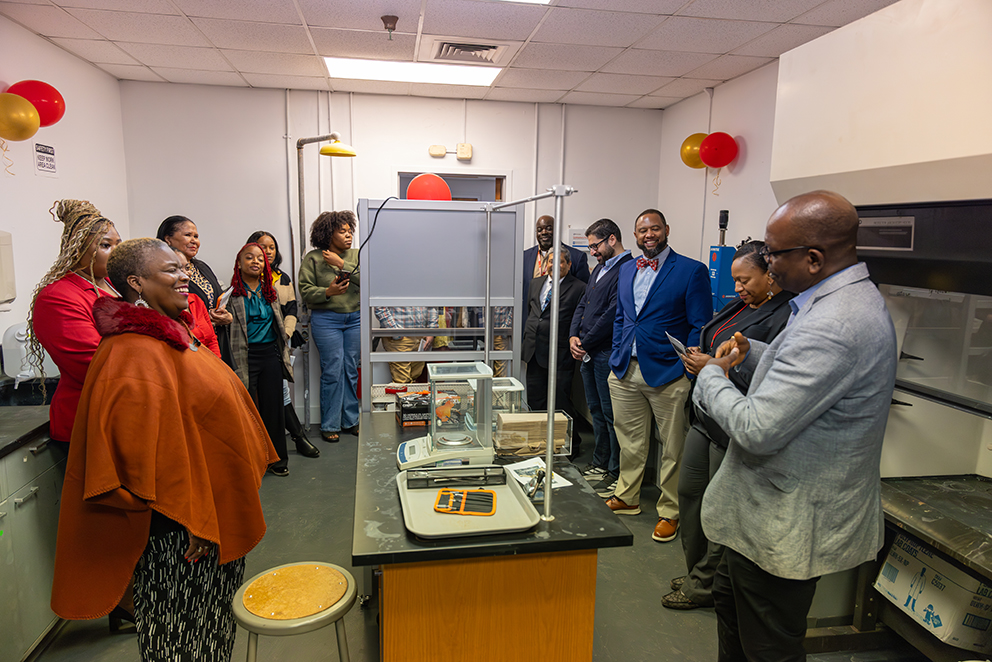Contact: Crystal Drake, Office of Communications, Public Relations and Marketing

Tuskegee University continues to connect the past with the present to meet the challenges that will transform the future. The university cut the ribbon Tuesday on the Historic Materials Conservation Lab, a collaborative initiative of the Architecture Department, Chemistry Department, and the Museum and Archives to advance scientific analysis, conservation, and preservation of building materials and artwork housed within the university’s collection.
The laboratory maintains a comprehensive repository of material samples sourced from historic structures located on the Tuskegee University campus and from buildings within the broader Black Belt region. This curated collection functions as a reference library, facilitating comparative analysis and study of historic building materials.
“What I see is truly a renaissance of the idea that architecture can engage with many other disciplines in ways that improve communities,” said Dr. Kwesi Daniels, Department Head of Architecture and Associate Professor at Tuskegee University. “Just as Booker T. Washington and his colleagues from across every part of the campus built Tuskegee brick by brick to create this place that transformed a community, we are moving beyond silos with teamwork across disciplines to continue Tuskegee’s legacy of innovation.”

The laboratory also provides graduate and undergraduate students with hands-on training and research opportunities in the fields of material conservation and testing, fostering interdisciplinary scholarship and professional development.
One such student, Kiana Wilcher, an Architecture major who will graduate in May, said the unique access to interdisciplinary study of how historic structures were built and the science behind preserving them, is why she chose Tuskegee. Growing up in Columbia, SC, she was always aware of the ways history was preserved and presented there. “All of those things were here in one place – and in a place where there is such a sense of community and a bond with peers and professors,” she said.
The lab was made possible by funding from the Mellon Foundation.
“We’re proud to support the incredible work being done at Tuskegee in historic preservation across so many disciplines,” said Justin Garrett Moore, program director for Humanities in Place at the Mellon Foundation. “Tuskegee is capitalizing on its resource, both facilities and people, to advance this work.”
© 2025 Tuskegee University



 Tuskegee University continues to connect the past with the present to meet the challenges that will transform the future. The university cut the ribbon Tuesday on the Historic Materials Conservation Lab, a collaborative initiative of the Architecture Department, Chemistry Department, and the Museum and Archives to advance scientific analysis, conservation, and preservation of building materials and artwork housed within the university’s collection.
Tuskegee University continues to connect the past with the present to meet the challenges that will transform the future. The university cut the ribbon Tuesday on the Historic Materials Conservation Lab, a collaborative initiative of the Architecture Department, Chemistry Department, and the Museum and Archives to advance scientific analysis, conservation, and preservation of building materials and artwork housed within the university’s collection. The laboratory also provides graduate and undergraduate students with hands-on training and research opportunities in the fields of material conservation and testing, fostering interdisciplinary scholarship and professional development.
The laboratory also provides graduate and undergraduate students with hands-on training and research opportunities in the fields of material conservation and testing, fostering interdisciplinary scholarship and professional development.